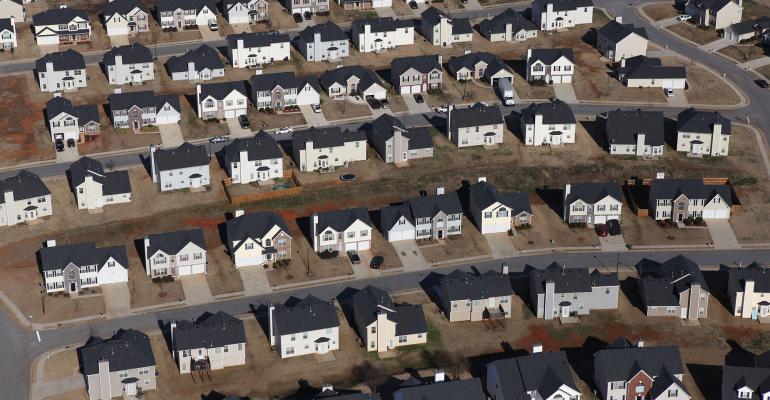(Bloomberg)—The $829 billion Abu Dhabi Investment Authority is pushing deeper into the US and real estate investments, tapping into opportunities brought on by the pandemic.
After one of its busiest years of dealmaking, the emirate’s biggest sovereign wealth fund has raised its target allocation range for North America to between 45% and 60%, and expects activity levels for real estate investments to remain high this year and beyond, according to its 2021 annual review released on Thursday.
“The outlook for real estate investment remains attractive,” ADIA said. “Market fundamentals are well-supported by rising replacement costs on the back of high inflation in labor and construction materials, the delayed supply-chain response, and other disruptions resulting from the pandemic.”
Due to its sheer size, ADIA’s choices can have an impact around the world. It’s already one of the biggest investors in US real estate, and its recent deals include stakes in German railcars, North American energy and Indonesia’s biggest internet firm.
ADIA is among Gulf sovereign wealth funds investing more in the US to capture opportunities arising from the fallout of the pandemic and rising fears of a global recession. Royal Group, another Abu Dhabi investment firm, plans to plow as much as $10 billion into US and European stocks to broaden its global portfolio. In neighboring Saudi Arabia, the $620 billion Public Investment Fund has been increasing its exposure to the US.
“ADIA sought out opportunities in regions and sub-regions with high potential over the long term and continued to build out its direct exposure to private markets,” Hamed bin Zayed Al Nahyan, the fund’s managing director, said in the review. “It also benefitted from positioning equity portfolios to capitalize on emerging trends, including opportunities arising from differing government responses to the pandemic.”
In 2021, ADIA’s private equity department committed more capital than ever before with 40 investments, up from 25 in 2020, including 12 co-investments in early-stage companies alongside its venture capital partners. Direct investments and co-investments represented 58% of its overall deployment for 2021, up from 55% in 2020, with the balance committed to funds.
- ADIA’s allocation range for private equity was raised to 7%-12% from 5%-10%
- The band for developed Asia has been reduced to 5%-10% from 5%-15%, which ADIA said was consistent with the region’s relative weighting in global indexes
- ADIA’s 20-year annualized returns through December of last year were 7.3%, compared with 6% the previous year
- Thirty-year annualized rates of return were 7.3% versus 7.2% in 2020
- ADIA said the increases can be attributed to both the years falling out of the calculations as well as performance in 2021 and that they underline “our preference for focusing on long-term trends”
ADIA’s private equity division will keep focusing on investments in technology, healthcare and digital consumer services. It expects “a continuation of the high level of competition for attractive companies, choppy IPO markets, and the need to adjust to pandemic-related and geopolitical developments.”
In fixed income, the fund will continue to build out its quantitative research capabilities to enhance investment decision-making and deploy “more capital into less liquid areas of fixed income including private credit, to improve returns in the low yield environment.”
For infrastructure, ADIA is focusing on larger-scale acquisitions and investments where it can deploy capital alongside partners, it said.
Centralized functions
In 2021, ADIA set up two new centralized functions and trimmed its middle and back offices. It recently also separated the real estate and infrastructure departments, which are both gaining in importance as the fund looks increasingly to private markets. The net result of all these changes meant that the fund lost 160 people, or almost 10% of its workforce, and now employees 1,520 staff.
ADIA was set up in 1976 to manage the oil surplus revenues of Abu Dhabi, one of the world’s top crude exporters. It’s the biggest sovereign wealth fund in the city, eclipsing Mubadala Investment Co. and ADQ, and one of the largest in the world.
© 2022 Bloomberg L.P.





